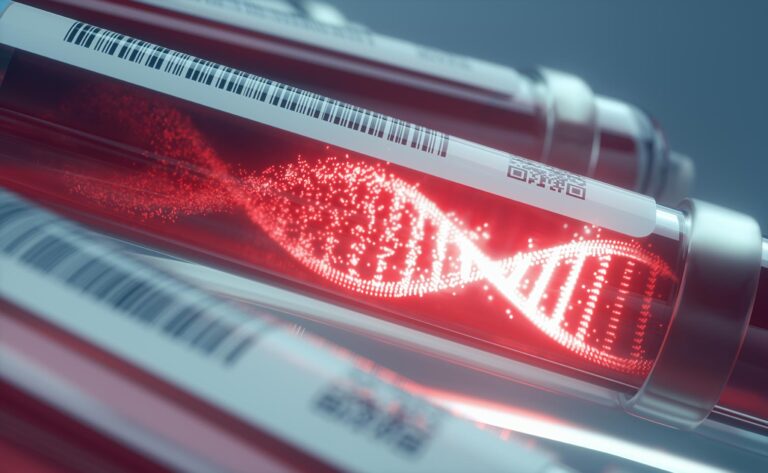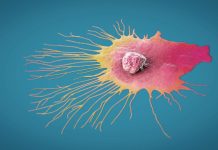
It would be hard to find an area of health where the microbiome has not been implicated as a major player. The microbiome is there even before birth, influencing maternal-child health outcomes, and it lingers, in a fashion, even after death. In between, the microbiome contributes to health, maintaining the gut-brain axis and interacting with the immune system. It also plays a role in many diseases, including metabolic disorders, autoimmune disease, and cancer.
The scientific community keeps improving our understanding of how the microbiome works. Though still incomplete, this understanding is inspiring dozens of companies to bring the microbiome to market. These companies hope that by producing therapeutics that alter the microbiome, they may alleviate suffering and even bring about cures. Moving far beyond the cataloging of microbiome constituents, these companies are making advances that may fundamentally change how we treat disease.
Galvanized by the gut and the Galapagos
When Mark Smith was earning his Ph.D. in microbiology at the Massachusetts Institute of Technology, a member of his family was struggling with a Clostridium difficile infection (CDI) that continued to rage even after seven failed rounds of vancomycin treatment. Driven by a combination of scientific curiosity and personal motivation, Smith studied fecal microbiota transplantation (FMT), a relatively new practice at the time. He quickly realized the contrast between the promising data supporting FMT as a technique and the lack of clinical implementation. He learned that one of the biggest hurdles was the limited access to the FMT’s key component—the fecal matter.
To eliminate this barrier, Smith founded OpenBiome, a nonprofit company that established the nation’s first public stool bank. “It’s like a blood bank, but for fecal transplants,” noted Smith. In 2013, OpenBiome provided FMT material that was used to treat six patients. Since then, the company has supplied FMT material to 46,000 patients through a network of 1200 hospitals. By contributing to the very rapid adoption of new technology, OpenBiome has hastened FMT’s emergence as the standard of care for CDI.
CDI can result in fever, nausea, abdominal pain, and life-threatening diarrhea. Normally a side effect of taking antibiotics, CDI is the leading hospital-acquired infection in the United States and, according to the Centers for Disease Control (CDC), an urgent public health threat. Antibiotic treatment is not very effective, and recurrent infections occur frequently.
Through his work at OpenBiome, Smith began to see other limitations and risks present in FMT technology such as the laborious colonoscopy delivery. These problems motivated Smith to launch Finch Therapeutics, which has been active since 2016. Smith said the company wants to “build a toolkit for engineering the microbiome.” But for the moment, the company’s focus is to develop an alternative to FMT. Rather than undergo FMT, patients could simply swallow a pill full of lyophilized bacteria. The company is currently using this method to target CDI and ulcerative colitis, a form of inflammatory bowel disease (IBD).
So, how did Finch find a way to turn a fecal sample into a pill? The company looked to work that had been carried out at the University of Minnesota by Alexander Khoruts, M.D., professor of medicine, and Michael J. Sadowsky, Ph.D., a professor in the department of microbiology and immunology and director of the BioTechnology Institute. Finch licensed intellectual property they developed that uses lyophilization, a freeze-drying process, to create a shelf-stable microbial community that can be delivered in an oral capsule. The pill has an enteric coating around it so that it releases its contents after passage through the stomach, in the intestinal tract. The bacteria inside the pill are alive but metabolically inactive. They regain their active state when water is added, upon arrival in the gut.
To derive products from fecal donors, Finch makes use of what it calls the Full-Spectrum Microbiota (FSM) platform. Finch is also looking forward to developing more defined products through its Rationally Selected Microbiota (RSM) platform, which is designed to identify the key microbes driving patient outcomes. RSM can sift through FSM data obtained from patients that have gone into remission. Once the key microbes are known, they can be grown and produced on a large scale, allowing patients to be treated without having to resort to donor material. Both the FSM and RSM approaches, the company hopes, will make significant changes to the landscape of FMT.
One FSM candidate, CP101, has been given breakthrough therapy designation for the treatment of patients with recurrent CDI by the U.S. Food and Drug Administration (FDA). CP101 is being evaluated in a Phase II trial named PRISM 3 that is currently enrolling patients. An RSM product, FIN-524, is an investigational product designed to treat a form of IBD known as ulcerative colitis. This drug, developed in partnership with Takeda Pharmaceutical, is based on the identification of specific strains responsible for driving the promising efficacy observed with fecal microbiota transplantation in IBD.
Finch’s sites go beyond the gut, however. Indeed, the company recently announced that the FDA has granted fast track designation to a product for the treatment of children with autism spectrum disorder (ASD). In a preliminary study, Finch’s collaborators at Arizona State University used FSM to treat 18 children affected by ASD. They found a 77% reduction of gastrointestinal symptoms and a 24% reduction of core ASD symptoms after only 8 weeks of treatment, phenotypes that were sustained for two years. Based on these promising initial results, Finch is conducting Phase II trials.
When Smith launched OpenBiome, the landscape of CDI treatment changed. Now that he is at Finch Therapeutics, Smith is ready to change the treatment landscapes of many more diseases. “If we could manage this ecosystem and intentionally modulate the composition of this community,” he said, “we could radically impact the drivers of morbidity and mortality.”
Bacteria to treat the brain
There is perhaps no area of microbiome research that garners more attention than the gut-brain axis, with the almost surreal premise that everything from depression to neurodegenerative diseases could be treated by altering the bacteria in our intestines. One of the many companies active in the gut-brain field is Axial Biotherapeutics. Like this field, which explores connections between the superior and inferior parts of the body, the company links two distant nodes—the headquarters just outside of Boston, and the research laboratory of Sarkis Mazmanian, Ph.D., a professor at the California Institute of Technology and a co-founder of Axial.
Mazmanian has long focused on how the bacteria in our gut can be used to treat autism and Parkinson’s disease (PD.) Mazmanian noted that the company “wants to know what molecules the gut bacteria are making and the role they have in the gut-brain connection.” Once we have accomplished this task, he continues, we can begin targeting these molecules in drug development.
Through transplantation of the microbiota from human PD patients and healthy controls into germ-free mice, Mazmanian’s research group established a causal relationship between the human microbiome and PD.
After identifying the key differences between the PD and healthy microbiomes, Axial assumed the task of altering molecules in the gut and manipulating microbial pathways. Accomplishing this task, company officials reasoned, would alter the course of neurodegeneration. Affecting the microbes would, in turn, affect the brain.
In recent work, Axial has focused on identifying certain metabolites found in high abundance in patients with ASD. Metabolomic analysis on serum samples obtained from the University of California, Davis, found that 33% of children with ASD have high dysregulation of the microbial derived metabolite 4-ethylphenyl sulfate (4-EPS), a small molecule caused by a breakdown of tyrosine by Clostridia bacteria. Although some level of 4-EPS is normally found in the body, the children with ASD had a much higher concentration. And, when 4-EPS was injected into a mouse model of ASD, it induced anxiety-like behaviors. Because microbes make 4-EPS, modifications to reduce the amount of 4-EPS are being sought by Axial. To date, the company has found about a dozen similar metabolites of interest.
The goal is to develop a method that will reduce these metabolites from getting into systemic circulation. A “molecular sponge,” noted David Donabedian, Ph.D., a co-founder and the CEO of Axial, is one of the methods the company plans to test. “Think of something that expands when you swallow it,” suggests Donabedian, “and will absorb these metabolites as it passes through the gastrointestinal tract.” The sponge would have a strong affinity to the metabolites of interest to Axial. The other method will use Bacteroides fragilis to help repair the leaky gut and reduce the passage of metabolites into the circulation.
Skin in the game
Naturally covered with commensal bacteria—most of which is harmless and some of which is helpful—the skin is an obvious place to start developing health products based on the microbiome. Although the skin is the largest organ of the body and readily inspected, much about it remains unknown. For example, it continues to challenge medical dermatology.
To find new treatments for skin disorders, Travis Whitfill co-founded Azitra, a microbiome-oriented startup company that he now serves as CSO. Whitfill saw opportunity in the skin microbiome when many others were starting to crowd the gut microbiome space. In addition to representing a less crowded field, skin microbiome technology is, Whitfill said, less burdensome from a regulatory perspective. Topical approaches pose fewer concerns than oral approaches. “Together,” notes Whitfill, “these qualities were really appealing.”
Azitra is building a strategy based on the commensal Staphylococcus epidermidis to treat skin infections. An abundant member of the skin microbiome, S. epidermidis plays an important role in beneficial processes such as tissue repair and immunity. One of Azitra’s strategies is to reintroduce the bacteria that may become limited during an infection. Another is to use the S. epidermidis to deliver biotherapeutic proteins to the skin.
One of the products in the company’s pipeline, AZT-02, was developed in collaboration with the Jackson Laboratory. AZT-02 uses S. epidermidis to deliver a therapeutic protein to the skin. This protein is LEKTI (lympho-epithelial Kazal-type related inhibitor), a protease inhibitor involved in regulating the rate of skin loss. Applied topically, AZT-02 provides continuous delivery of functional LEKTI.
AZT-02 is designed for people with Netherton syndrome (NS), a serious genetic disorder for which there are few treatment options. Affecting 1 in 200,000 children, NS is caused by mutations in the SPINK5 gene, which is responsible for making the LEKTI protein. In NS patients, skin is sensitive, open, red, scaly, and subject to excess shedding.
Similarly, S. epidermidis is being engineered by Azitra to deliver other beneficial proteins to the skin. For example, filaggrin delivery could help treat eczema and ichthyosis vulgaris, and interleukin-10 delivery could help treat psoriasis.
Another one of Azitra’s products, AZT-04, is a nonprotein-expressing strain of S. epidermidis. It is designed to treat rough, dry skin. The strain is an auxotroph, meaning that it requires a supplement added to the product to grow. In this case, the necessary addition is the amino acid D-alanine, which the bacteria can grow off of for only two days. When the D-alanine is used up, the bacteria die and the product must be re-applied.
Such a product, Whitfill added, would be of great interest to certain patient populations, for example, cancer patients who take EGFR inhibitors and who sometimes develop a severe, often treatment-limiting rash. Azitra recently began a clinical study with AZT-04, which the company hopes to develop as a potential treatment.
In just a few years, the work going on at these young microbiome companies has changed how we think about the microbiome, its role in health and disease, and how it might be altered to become the basis of new treatments. Whether it’s skin rashes, gut infections, or ASD, the work going on at Avitra, Finch, and Axial (and many other microbiome companies) is far from skin deep.











